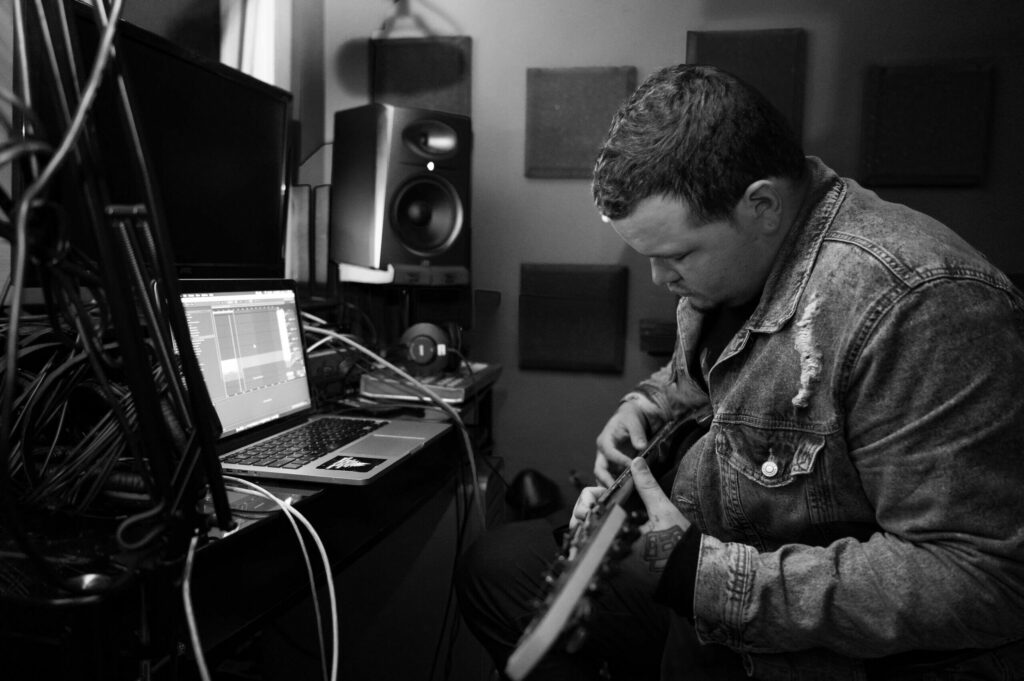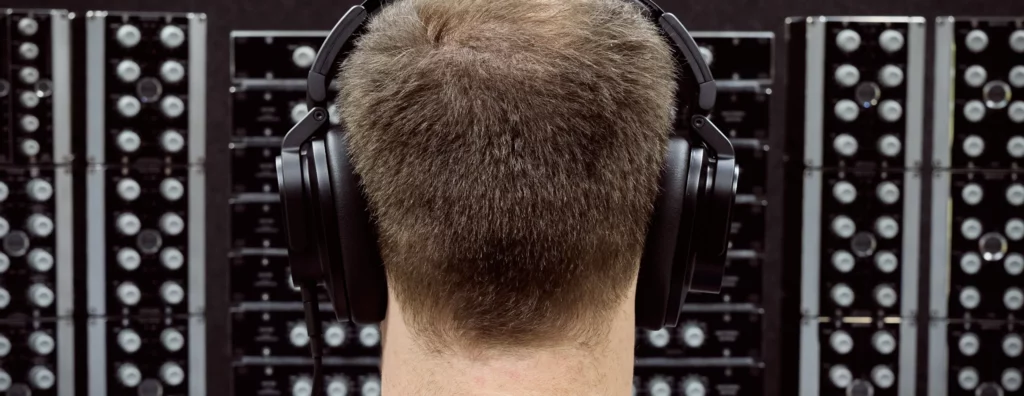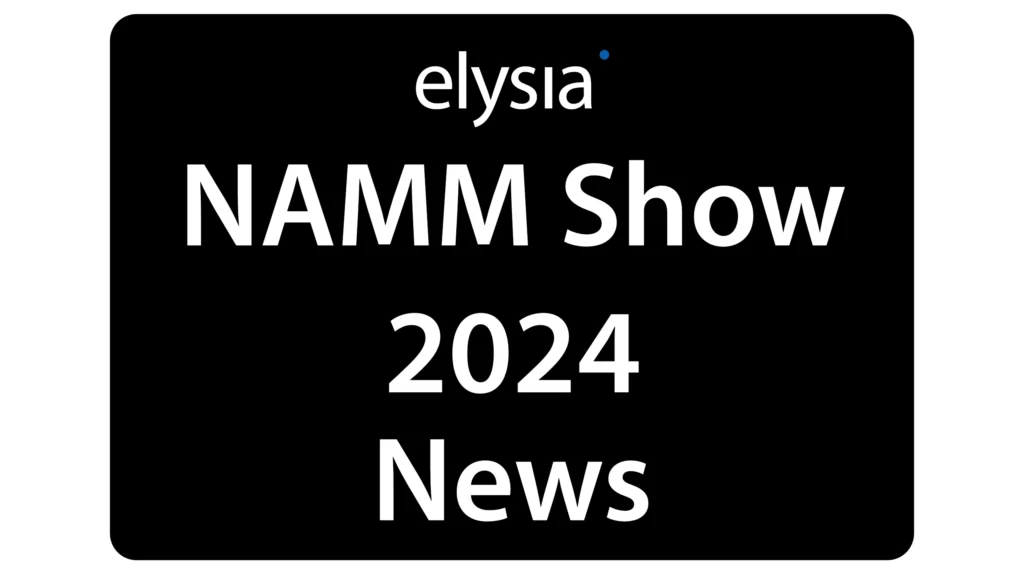Estimated reading time: 14 minutes
Does audio streaming platforms also require a special master?
Introduction
Streaming platforms (Spotify, Apple, Tidal, Amazon, Youtube, Deezer etc.) are hot topics in the audio community. Especially since these online services suggest concrete guidelines for the ideal loudness of tracks. To what extent should you follow these guidelines when mastering and what do you have to consider when interacting with audio streaming services? To find the answer, we have to take a little trip back in time.
Do you remember the good old cassette recorder? In the 80s, people used it to make their own mixtapes. Songs of different artists gathered on a tape, which we pushed into a tape deck of our car with a Cherry Coke in the other hand in order to show up with suitable sound before hitting at the next ice cream dealer in the city center. The mixtapes offered a consistently pleasant listening experience, at least as far as the volume of the individual tracks was concerned. When we created mixtapes, the recording level was simply adjusted by our hand, so that differently loud records were more or less consciously normalized by hand.
Back to the Streaming Future. Time leap: Year 2021.
Music fans like us still enjoying mixtapes, except that today we call them playlists and they are part of various streaming services such as Apple Music, Amazon Music, Spotify, YouTube, Deezer or Tidal. In their early years, these streaming services quickly discovered that without a regulating hand on the volume fader, their playlists required constant readjustment by the users due to the varying loudness of individual tracks.
So they looked for a digital counterpart to the analog record level knob and found it in an automated normalization algorithm that processes every uploaded song according to predefined guidelines. The streaming service Spotify for example, specifies the number -14 dB LUFS as an ideal loudness value. This means if our song is louder than -14 dB LUFS, it will be automatically reduced in volume by the streaming algorithm so that playlists have a more consistent average loudness. Sounds like a good idea at first glance, right?
Why LUFS?
The problem with different volume levels was not just limited to the music area. In the broadcasting area, the problem was also widespread. The difference in volume between a television movie and the commercial interruption it contains sometimes took on such bizarre proportions that the European Broadcast Union felt forced to issue a regulation on loudness. This was the birth of the EBU R128 specification, which was initially implemented in Germany in 2012. With this regulation, a new unit of measurement was introduced, the LUFS (Loudness Units relative to Full Scale).
Whereby 1 x LU (Loudness Units) equals the relative value of 1 dB and at the same time, a new upper limit for digital audio was defined. A digital peak level of -1 dB TP (True Peak) should not be exceeded according to EBU speecification. This is the reason why Spotify and Co provide a True Peak limit of -1 dBFS for music files.
Tip: I recommend to keep this limit. Especially if we do not adhere to the loudness specification of -14 dB LUFS. At higher levels, the normalization algorithm will definitely intervene in a moderating way. Spotify refers to the following in this context: If we do not keep -1 dB TP as limiter upper limit (ceiling), sound artifacts may occur due to the normalization process.
This value is not carved in stone, as you will see later. Loudness units offer a special advantage to the mastering engineer. Simply spoken, we should be able to use LUFS to quantify how “loud” a song is and thereby compare different songs in terms of loudness. More on this later.

How can we see if our mix is normalized by a streaming service?
The bad news is that some streaming services have quite different guidelines. Therefore, you basically have to search for the specifications of each individual service if you want to follow their guidelines. This can be quite a hassle, as there are more than fifty streaming and broadcasting platforms worldwide. As an example, here are the guidelines of some services in regards to ideal LUFS values:
-11 LUFS Spotify Loud
-14 LUFS Amazon Alexa, Spotify Normal, Tidal, YouTube
-15 LUFS Deezer
-16 LUFS Apple, AES Streaming Service Recommendations
-18 LUFS Sony Entertainment
-23 LUFS EU R128 Broadcast
-24 LUFS US TV ATSC A/85 Broadcast
-27 LUFS Netflix
The good news is that there are various ways to compare your mix with the specifications of the most important streaming services at a glance. How much your specific track will be manipulated by the respective streaming service? You can check this on the following website: www.loudnesspenalty.com
Some DAWs, such as the latest version of Cubase Pro also feature comprehensive LUFS metering. Alternatively, the industry offers various plug-ins that provide information about the LUFS loudness of a track. One suitable candidate is YOULEAN Loudness Meter 2, which is also available in a free version: https://youlean.co/youlean-loudness-meter/.
Another LUFS metering alternative is the Waves WLM Plus Loudness Meter, which is already fed with a wide range of customized presets for the most important platforms.
Metering
Using the Waves Meter as an example, we will briefly go into the most important LUFS meters, because LUFS metering involves a lot more than just a naked dB number in front of the unit. When we’re talking about LUFS, it should be clear what this exactly means. LUFS data is determined over a period of time and depending on the length of the time span and this can lead to different results. The most important value is the LUFS Long Term Display.
This is determined over the entire duration of a track and therefore represents an average value. To get an exact Long Term value we have to play the song once from the beginning to the end. Other LUFS meters (e.g. in Cubase Pro) like to refer to the Long Term value as LUFS Integrated. LUFS Long Term or Integrated is the value that is prefixed in the streaming platform’s specifications. For “Spotify Normal” this means that if a track has a loudness of -12LUFS Integrated, the Spotify algorithm will lower this track by two dB to -14LUFS.
LUFS Short Term
The Waves WLN Plus plugin offers other LUFS indicators for evaluation, such as LUFS Short Term. LUFS Short Term is determined over a period of three seconds when the plugin measures according to EBU standards. This is an important point, because depending on the ballistics, the measurement distances are different in time and can therefore lead to different results. A special feature of the Waves WLM Plus plugin is the built-in True Peak Limiter. Many streaming platforms insist on a true peak limit of -1dB (some even -2dB). If you use the WLM Plus Meter as the last plugin in the chain of your mastering software, the True Peak limit is guaranteed not to be exceeded when the limiter is activated.
Is the “Loudness War” finally over thanks to LUFS?
As we already learned, all streaming platforms define maximum values. If our master exceeds these specifications, it will automatically made quieter. The supposedly logical conclusion: we no longer need loud masters. At least this is true for those who adhere to the specifications of the streaming platforms. Now, parts of the music industry have always been considered a place away from all reason, where things like to run differently than logic dictates. The “LUFS dictate” is a suitable example of this.
Fact is: Most professional mastering engineers don’t care about LUFS in practice nor about the specifications of the streaming services!
Weird stuff, I know. However, the facts are clear and the thesis can be proven with simple methods. We remember that YouTube, just like Spotify, specifies a loudness of -14dB LUFS and automatically plays louder tracks at a lower volume. So all professional mixes should take this into account, right? It’s nice that this can be checked without much effort. Open a recent music video on YouTube, right-click on the video and click on ” Stats for nerds”. The entry “content loudness” indicates by how much dB the audio track is lowered by the YouTube algorithm. Now things become interesting. For the current AC/DC single “Shot in the Dark” this is 5.9dB. Billy Talent’s “I Beg To Differ” is even lowered by 8.6dB.


Amazing, isn’t it?
Obviously, hardly anyone seems to adhere to the specifications of the streaming platforms. Why is that?
There are several reasons. The loudness specifications differ from streaming platform to streaming platform. If you take these specifications seriously, you would have to create a separate master for each platform. This would result in a whole series of different sounding tracks, for the following reason. Mastering equipment (whether analog or digital) does not work linearly across the entire dynamic spectrum.
Example:
The sound of the mix/master changes if you have to squeeze 3dB more gain reduction out of the limiter for one song than for another streaming platform. If you finally normalize all master files to an identical average value, the sound differences become audible due to the different dynamics processing. The differences are sometimes bigger and sometimes smaller. Depending on which processing you have done.
Another reason for questioning the loudness specifications is the inconsistency of the streaming platforms. Take Spotify, for example. Do you know that Spotify’s normalization algorithm is not enabled when playing Spotifys via web player or a third party app? From the Spotify FAQs:

The Metal Mix
This means that if you deliver a metal mix with -14dB LUFS and it is played back via Spotify in a third-party app, the mix is simply too weak compared to other productions. And there are other imponderables in the streaming universe. Spotify allows its premium users to choose from three different normalization settings, with standards that also differ. For example, the platform recommends a default of -11dB LUFS and a True Peak value of -2dB TP for the “Spotify Loud” setting, while “Spotify Normal” is certified at -14dB LUFS and -1dB TP. Also from the Spotify FAQs:

For mastering engineers, this is a questionable state of affairs. Mastering for streaming platforms is like trying to hit a constantly changing target at varying distances with a precision rifle. Even more serious, however, is the following consideration: What happens if one or more streaming platforms raise, lower, or even eliminate their loudness thresholds in the future? There is no guarantee that the specifications currently in place will still be valid in the future. Unlikely? Not at all! YouTube introduced its normalization algorithm in December 2015. Uploads prior to December 2015 may sound louder if they were mastered louder than -14dB LUFS. Even after 2015, YouTube’s default has not remained constant. From 2016 to 2019, the typical YouTube normalization was -13dB and did not refer to LUFS. Only since 2019 YouTube has been using the -14dB LUFS by default.
The reason why loudness is not exclusively manifested in numbers
If you look at the loudness statistics of some YouTube videos and listen to them very carefully at the same time, you might have made an unusual observation. Some videos sound louder even though their loudness statistics indicate that they are nominally quieter than other videos. How can this be? There is a difference between measured loudness in LUFS and perceived loudness. Indeed, it is the latter that determines how loud we perceive a song to be, not the LUFS specification. But how do you create such a lasting loudness impression?
Many elements have to work together for us to perceive a song as loud (perceived loudness). Stereo width, tonal balance, song arrangement, saturation, dynamics manipulation – just to name a few pieces of the puzzle. The song must also be well composed and performed. The recording must be top-notch and the mix professional. The icing on the cake is a first-class master. If all these things come together, the song is denser, more forward and, despite moderate mastering limiter use, simply sounds louder than a mediocre song with less good mix & mastering, even if the LUFS integrated specifications suggest a different result. An essential aspect of a mastering process is professional dynamics management. Dynamics are an integral part of the arrangement and mix from the beginning.
In mastering, we want to try to further emphasize dynamics while not destroying them. Because one thing is always inherent in the mastering process: a limitation of dynamics. How well this manipulation of dynamics is done is what separates good mastering from bad mastering and a good mix with a professional master always sounds fatter and louder than a bad mix with a master that is only trimmed for loudness.
Choose your tools wisely!
High quality equalizers and compressors like the combination of the elysia xfilter and the elysia xpressor|neo provide a perfect basis for a more assertive mix and a convincing master. Quality compression preserves the naturalness of the transients, which automatically makes the mix appear louder. You miss the punch and pressure in your song? High-quality analog compressors always guarantee impressive results and are more beneficial to the sound of a track than relying solely on digital peak limiting.
You are loosing audible details in the mixing and mastering stage? Bring them back into light with the elysia museq! The number of playback devices has grown exponentially in recent years. This doesn’t exactly make the art of mastering easier.
Besides the classic hi-fi system, laptops, smart phones, Bluetooth speakers and all kinds of headphones are fighting for the listener’s attention in everyday life. Good analog EQs and compressors can help to adjust the tonal focus for these devices as well. Analog processing also preserves the natural dynamics of a track much better than endless plug-in rows, which often turn out to be a workflow brake. But “analog” can provide even more for your mixing & mastering project. Analog saturation is an additional way to increase the perceived loudness of a mix and to noticeably improve audibility, especially on small monitoring systems like a laptop or a Bluetooth speaker.
Saturation and Coloration
The elysia karacter provides a wide range of tonal coloration and saturation that you can use to make a mix sound denser and more assertive. Competitive mastering benefits sustainably from the use of selected analog hardware. The workflow is accelerated and you can make necessary mix decisions very quick and accurate. For this reason, high-quality analog technology enjoys the highest popularity, especially in high-end mastering studios. karacter is available as a 19″ Rack Version, karacter 500 – module and in our new super handy qube series as a karacter qube.
Mastering Recommendations for 2021
As you can see, the considerations related to mastering for streaming platforms are anything but trivial. Some people’s heads may be spinning because of the numerous variables. In addition, there is still the question of how to master your tracks in 2021.
The answer is obvious: create your master in a way that serves the song. Some styles of music (jazz, classical) require much more dynamics than others (heavy metal, hip-hop). The latter can certainly benefit from distortion, saturation, and clipping as a stylistic element. What sounds great is allowed. The supreme authority for a successful master is always the sound. If the song calls for a loud master, it is legitimate to put the appropriate tools in place for it. The limit of loudness maximization is reached when the sound quality suffers. Even in 2021, the master should sound better than the mix. The use of compression and limiting should always serve the result and not be based on the LUFS specifications of various streaming services. Loudness is a conscious artistic decision and should not end up in an attempt to achieve certain LFUS specifications.
And the specifications of the streaming services?
How many LUFS should i master to?
There is only one valid reason to master a song to -14 dB LUFS. The value of -14 dB LUFS is just right if the song sounds better with it than with -13 dB or -15 dB LUFS!
I hope you were able to take some valuable information from this blog post and it will help you take your mix and personal master for digital streaming services to the next level.
Yours, Ruben Tilgner






